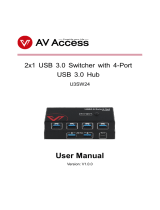- 5 -
Chapter 3 Drivers Installation ........................................................................................63
3-1 Installing Chipset Drivers ............................................................................... 63
3-2 Application Software ...................................................................................... 64
3-3 Technical Manuals .......................................................................................... 64
3-4 Contact ........................................................................................................... 65
3-5 System ........................................................................................................... 65
3-6 Download Center ........................................................................................... 66
3-7 New Program ................................................................................................. 66
Chapter 4 Unique Features ...........................................................................................67
4-1 Xpress Recovery2 .......................................................................................... 67
4-2 BIOS Update Utilities ..................................................................................... 70
4-2-1 Updating the BIOS with the Q-Flash Utility .............................................................70
4-2-2 Updating the BIOS with the @BIOS Utility .............................................................73
4-3 EasyTune 6 .................................................................................................... 74
4-4 Q-Share .......................................................................................................... 75
4-5 eXtreme Hard Drive (X.H.D) .......................................................................... 76
4-6 Auto Green ..................................................................................................... 77
4-7 Intel Rapid Start Technology .......................................................................... 78
4-8 Intel Smart Connect Technology .................................................................... 80
4-9 Intel Smart Response ..................................................................................... 82
Chapter 5 Appendix ......................................................................................................85
5-1 ConguringSATAHardDrive(s) ..................................................................... 85
5-1-1 ConguringIntelZ77SATAControllers ..................................................................85
5-1-2 ConguringMarvell88SE9172SATAControllers ...................................................93
5-1-3 Installing the SATA RAID/AHCI Driver and Operating System ...............................99
5-2 Qualcomm Atheros Killer Network Manager ................................................ 105
5-3 ConguringAudioInputandOutput ............................................................. 107
5-3-1 Conguring2/5.1-ChannelAudio .......................................................................... 107
5-3-2 Creative Software Suite ........................................................................................107
5-3-3 ConguringS/PDIFOut ........................................................................................ 111
5-3-4 ConguringAudioRecording ................................................................................112
5-3-5 Using the Sound Recorder ...................................................................................114
5-4 Troubleshooting............................................................................................ 115
5-4-1 Frequently Asked Questions ....................................................................... .........115
5-4-2 Troubleshooting Procedure ..................................................................................116
5-5 Debug LED Codes ....................................................................................... 118
5-6 Regulatory Statements ................................................................................. 122






















